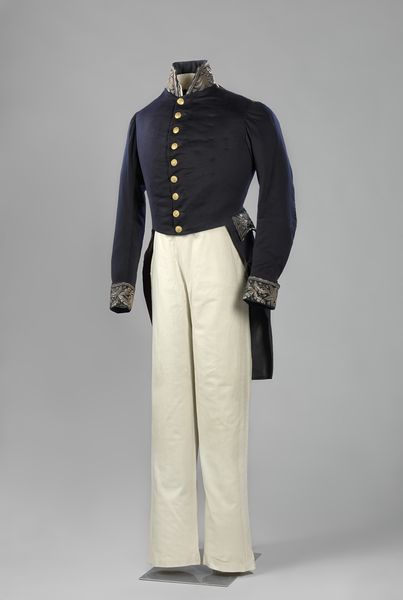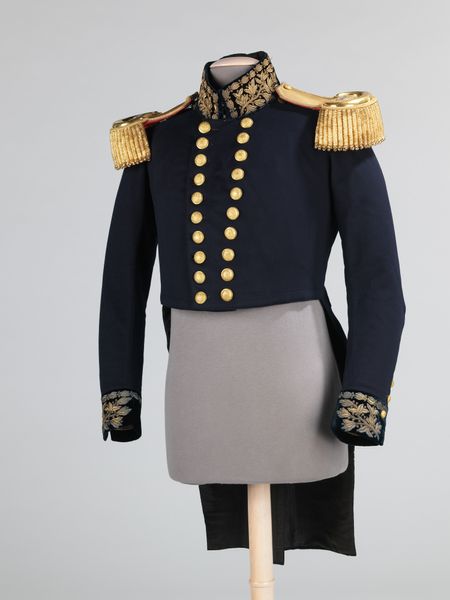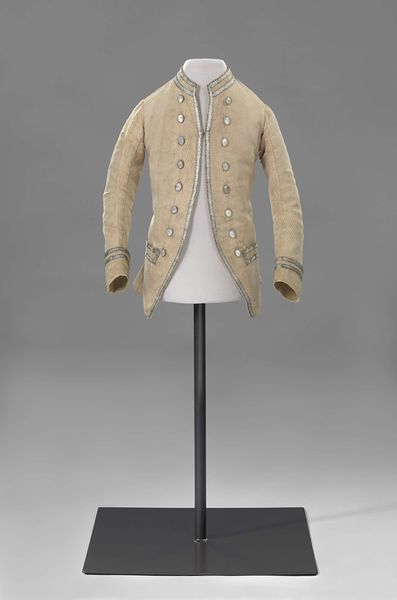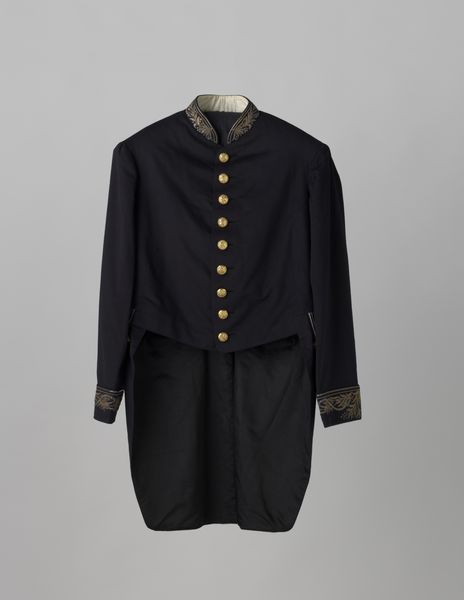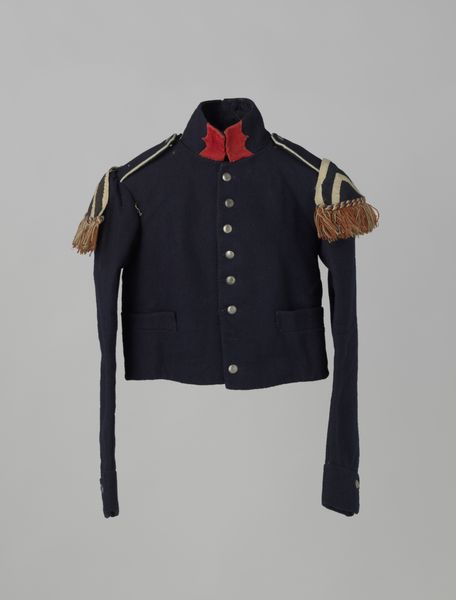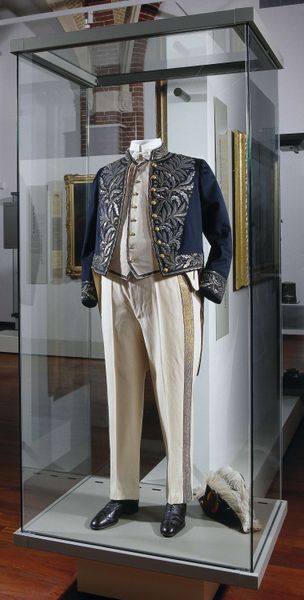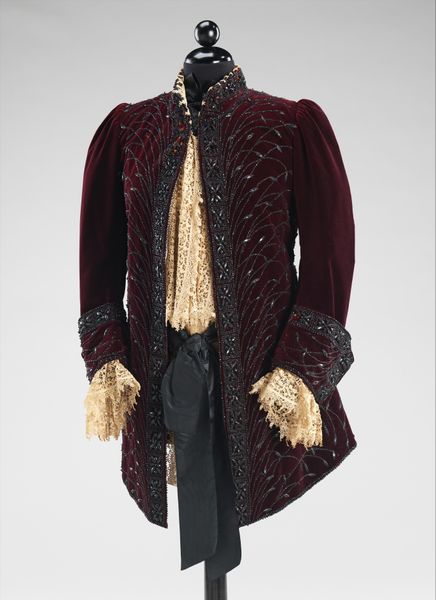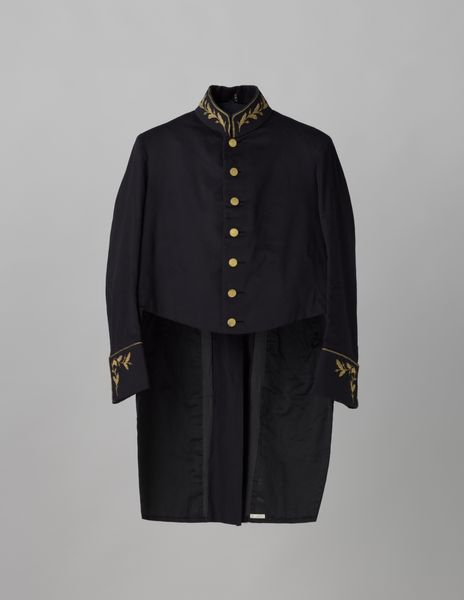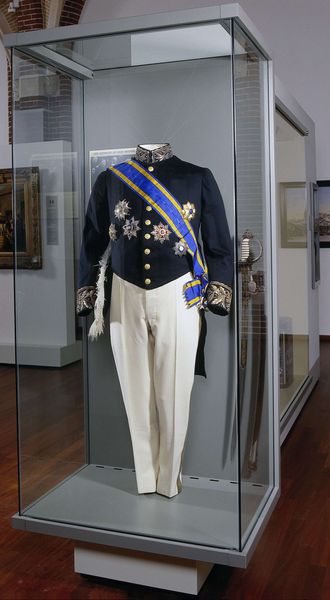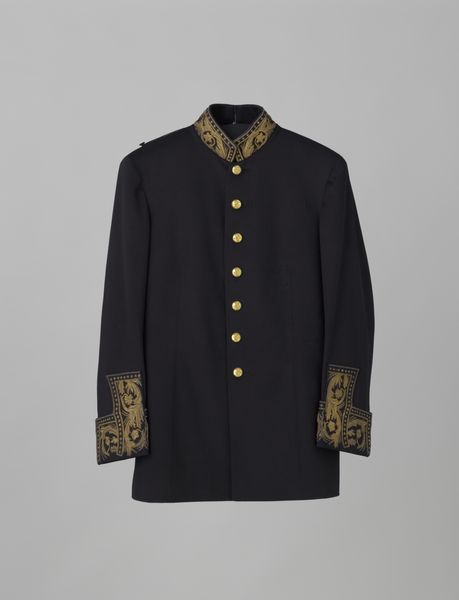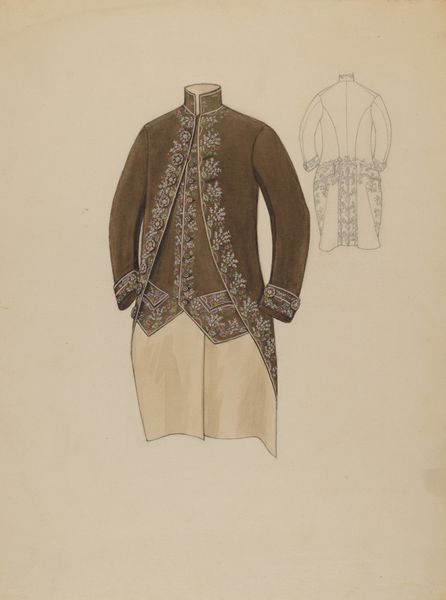
#
portrait
#
romanticism
#
academic-art
Dimensions: length 85 cm, length 46 cm, width 39 cm
Copyright: Rijks Museum: Open Domain
Editor: Here we have, “Jas,” created sometime between 1802 and 1832. It is attributed to an anonymous artist, but what we’re looking at appears to be a jacket of some kind. It has such an authoritative presence. It evokes images of powerful military leaders and romanticized battle scenes. What's your take on this piece? Curator: Well, you've immediately picked up on some interesting associations. I think this military garment serves as an intriguing historical marker. Beyond the visual aesthetic and romantic symbolism, it’s vital to consider the role clothing plays in constructing social hierarchies and power dynamics. Who would have worn this, and what message did they aim to project? Editor: That's a great point. I didn't think about the practical purpose beyond aesthetics. Who *would* have worn this? What does it say about that person's identity or position in society? Curator: Precisely! Consider the social context: post-Revolution Europe, where military strength often translated directly to political authority. This garment would have signified status, allegiance, and perhaps even contributed to a carefully cultivated persona of unwavering power. Editor: So, it’s less about the garment itself and more about what it *represented* within the broader social framework. Curator: Exactly. We can also analyze the details—the elaborate trim, the rich colors, and the overall silhouette—as calculated strategies to reinforce a desired image within the social and political arena of that era. Editor: Fascinating. I’m starting to see this jacket as less of an isolated object and more as a reflection of complex historical and societal currents. Thank you! Curator: Indeed! It's a good reminder of the active role garments and other cultural objects have in shaping our understanding of the past.
Comments
No comments
Be the first to comment and join the conversation on the ultimate creative platform.

